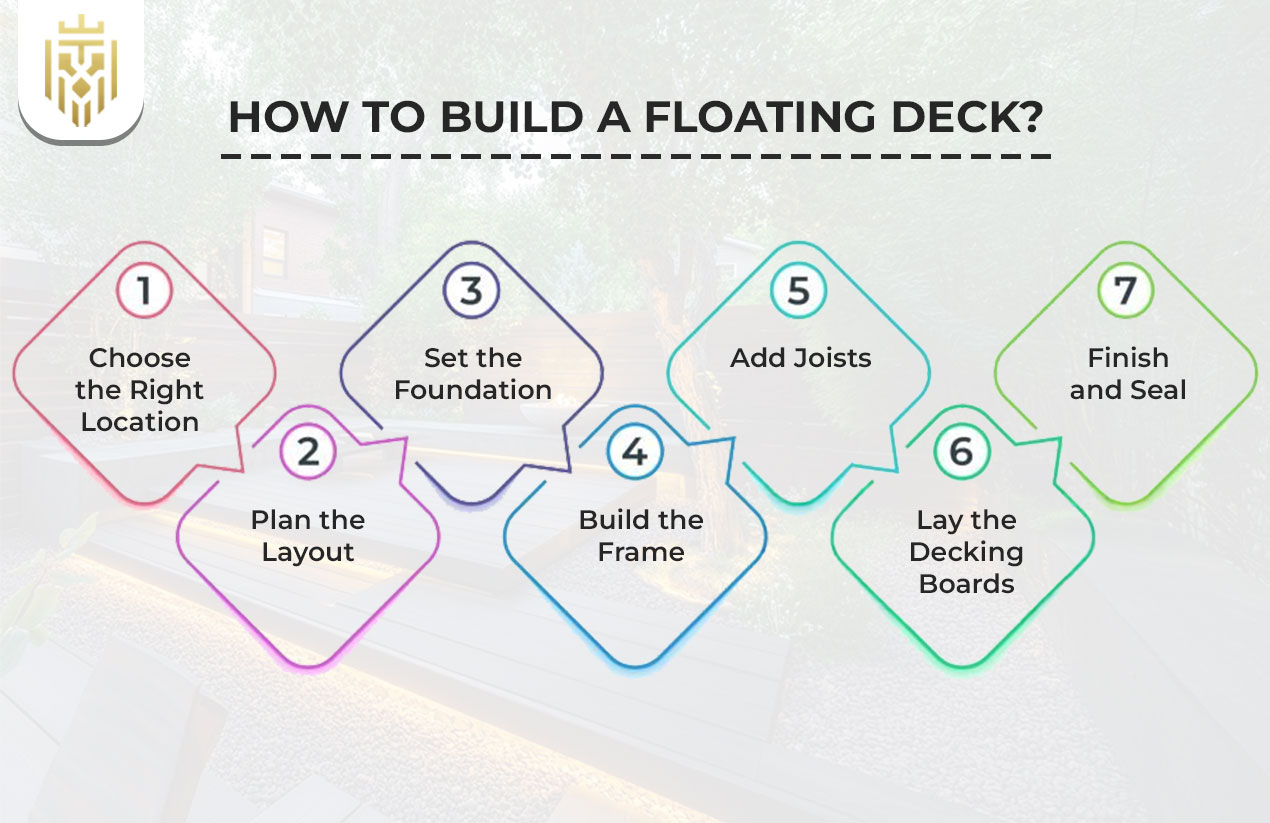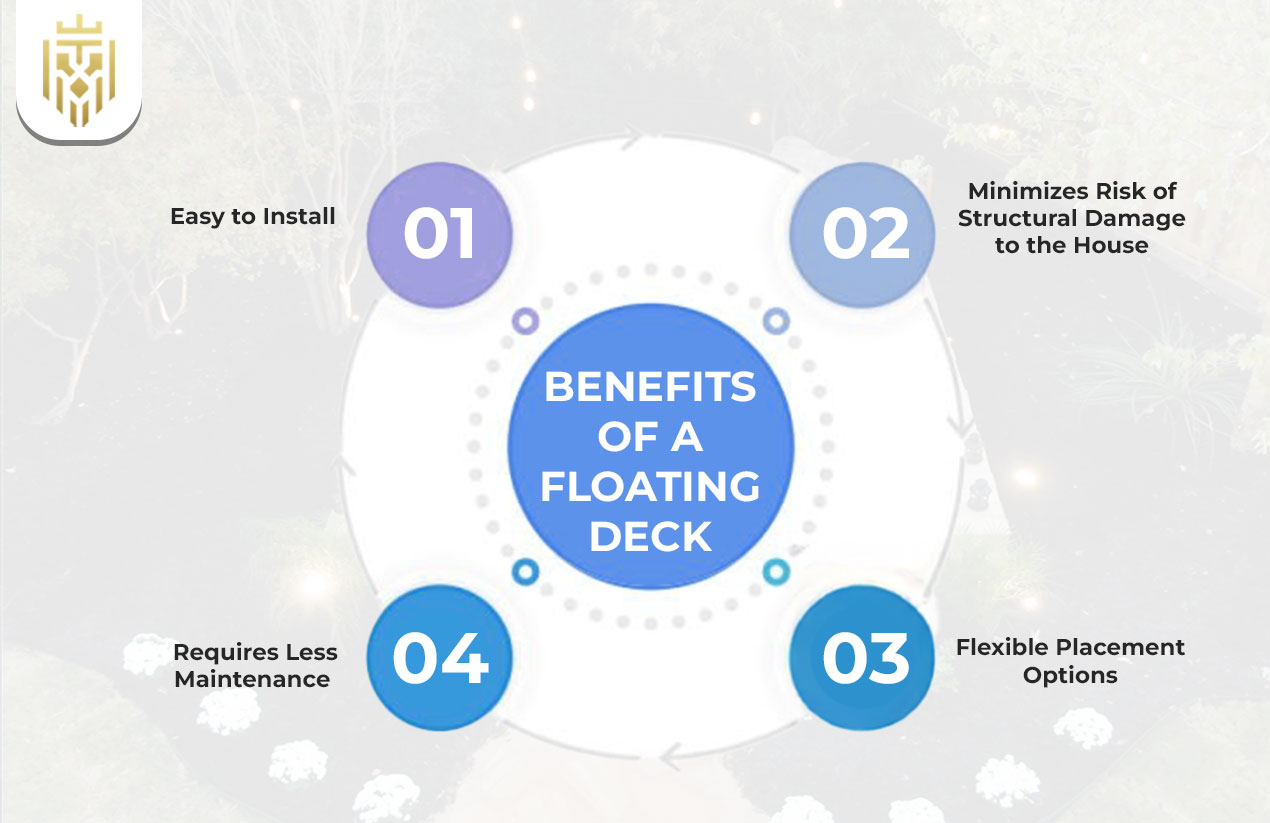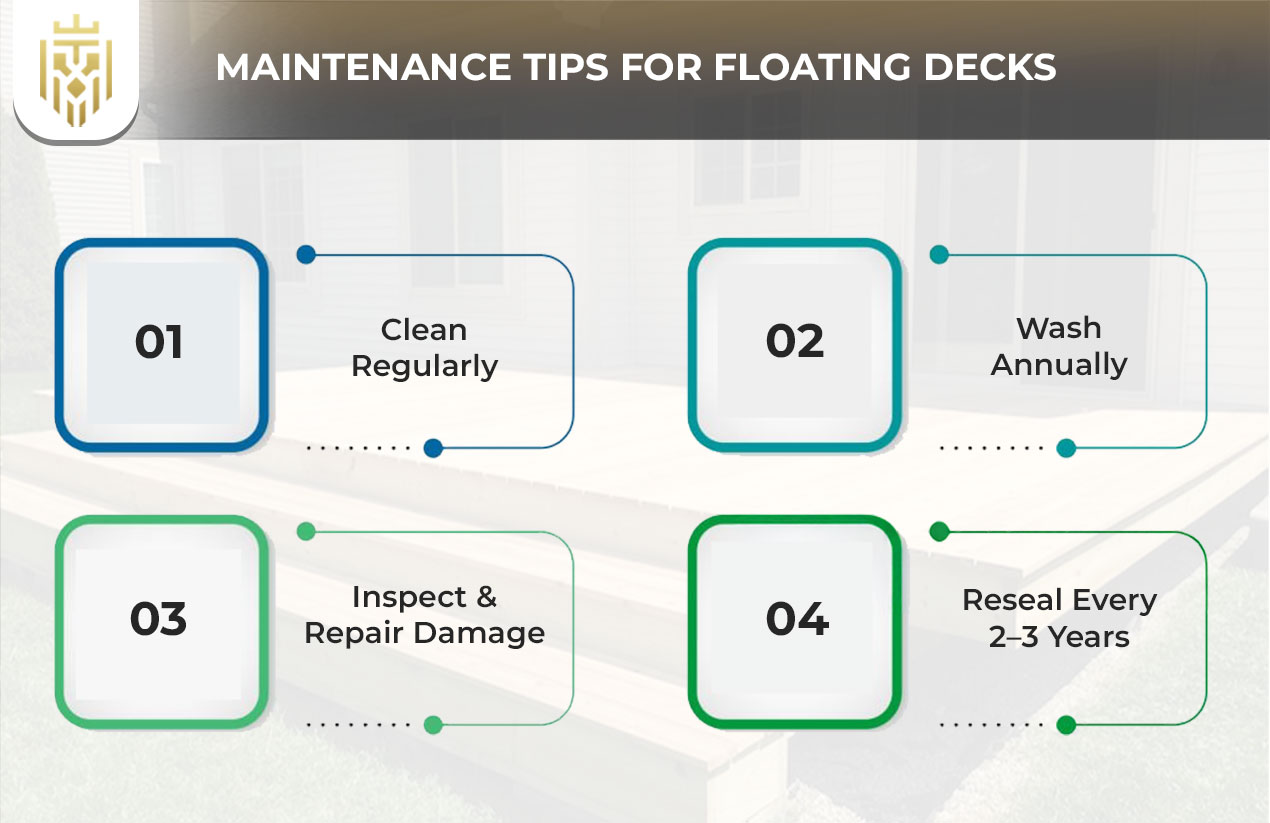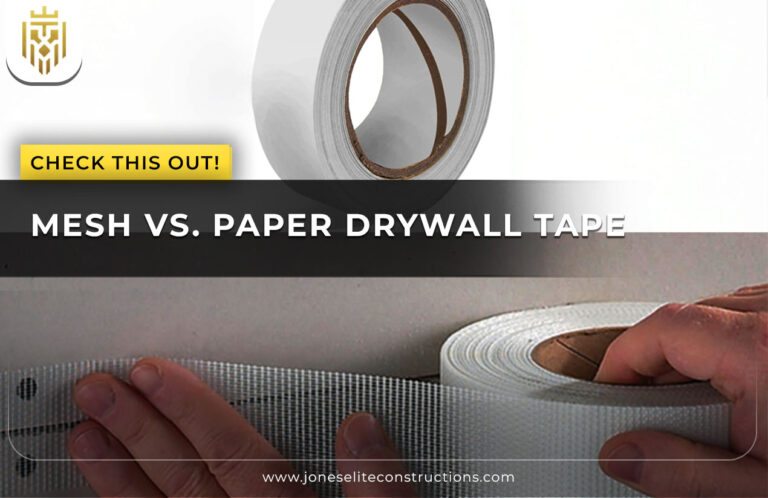What is a Floating Deck?
A floating deck is a freestanding deck that is not connected to a structure in any way but rests directly on the ground. It involves basic floating deck plans, which are simple to design and customize to fit different outdoor areas. In case you want to know what a floating deck is, it is a versatile choice suitable for uneven terrain or a temporary system.
How to Build a Floating Deck?

Knowing how to construct a floating deck entails strict planning and accurate implementation. The process of completing this type of deck, even the difficult parts like choosing materials and following step-by-step instructions, may be easy to consider when a budget-conscious outdoor space is desired that involves minimal construction and will provide long-lasting enjoyment.
Choose the Right Location
It is important to select the right location during the construction of a floating deck. Choose a level and dry place that minimizes water and makes it stable. Do not use areas with a history of floods, and before you lay out your plans for floating decks, ensure that they comply with local codes.
Plan the Layout
Layout planning starts with proper measurements and sound design. Take reference to the detailed plans in a deck to make sure of efficiency and symmetry in space. Stakes and strings should also be used as markers to help lay out its location and measure all dimensions twice before starting to dig.
Set the Foundation
Install concrete blocks or deck piers on top of compacted soil on which the structure shall be supported. This forms a strong foundation, which is necessary for the stability of the ground. Although this is a ground-level job, the leveling done is perfect to avoid wobbling or eventual sinkage.
Build the Frame
The outer frame can be done with pressure-treated lumber. In this step of the floating deck, square corners and accurate alignment are crucial. Fasten all joints deeply with galvanized screws to handle moisture exposure and avoid getting corroded easily.
Add Joists
Joists need to be applied in line and not too far apart; about 16 inches between joists is normal, and they can be nailed inside the frame. This is to strengthen the structure of the deck to avoid sagging. This ought to be keenly supported to get to the surface boards.
Lay the Decking Boards
Lay the decking boards across the joists, spaced with a slight gap between the joists, allowing drainage. This improves long life and avoids rotting. Interlock boards according to steps so that they look clean and complete with the boards, flush and automatically tight as your deck.
Finish and Seal
After fixing the deck boards, smooth out any jagged edges and place a protective cover on them. Sealing saves on life expectancy, especially of the ground-level decks, which are likely to be subject to moisture. An excellent finish enhances the look and prevents ultraviolet damage as well.
Benefits of a Floating Deck

The floating deck has an easy but classy way of expanding the outdoor living space. It also does not involve any digging or a concrete base and is regarded as a cost-effective option as a means to add a better look and functionality in the backyard.
Easy to Install
The process of how to build a floating deck does not necessitate the use of sophisticated equipment, which makes it attractive to the general public in need of a fulfilling yet economically sound approach to getting an appealing and effective outdoor setup built by a professional.
Minimizes Risk of Structural Damage to the House
This deck is not hinged on your house because it is freestanding. It implies that the probabilities of water harm and structural tension to your house will be minimal, particularly in comparison with the conventional, fixed attachment of the decks.
Flexible Placement Options
A floating deck can be built in different places, and there can be grass, gravel, or even concrete. This adjustable positioning is therefore suitable on uneven ground or rented places where it is not supposed to build anything permanent.
Requires Less Maintenance
A floating deck that is well-sealed is usually low in maintenance. Once there are no attachment points and clearance issues, then there is less likelihood of water infiltration issues or pest damage, which is a common problem when using ordinary cavity-type raised decks.
Where Can You Build a Floating Deck?
The floating deck can be constructed almost anywhere level, such as in the backyard, around the pool, or at garden corners. With floating deck plans, it would be easy to adjust the designs to fit shadow areas, sunny areas, or compact areas.
Maintenance Tips for Floating Decks

Maintaining your floating deck in good condition is as simple as adhering to simple maintenance. It does not really need much upkeep: basic seasonal maintenance will make it stay looking great and be safe with your children and visitors throughout its lifespan.
Clean Regularly
Clean your deck by sweeping it every week to get rid of debris and dirt. This deters the formation of mold and algae, especially in humid places. Periodic cleaning assists in maintaining the finish and makes sure that the likelihood of stain or discoloration is small.
Wash Annually
Clean your deck once a year with a mild soap applied with a garden hose or power washer. This general cleaning gets rid of this ingrained dirt and maintains the natural color of the wood as well as the texture in the long run.
Inspect & Repair Damage
Check your floating deck every now and then for any dents, warping, unfastened screws, etc. Inspect and fix minor defects on time before big structural issues arise. Regular inspection is a core avenue in ensuring the deck’s safety and appearance.
Reseal Every 2–3 Years
Sealing, in turn, aids in preventing your floating deck from absorbing moisture, UV rays, and abrasion. To achieve maximum results, seal the decks with quality sealant, which is needed after every 2 to 3 years, particularly in the case of decks that experience extreme sunlight or frequent foot traffic.
FAQs
1) What is a floating deck?
A floating deck is a deck that is free-standing, ground-level and non-structural. It is perfect for irregular yards, and it is flexible in layout and position.
2) How to Build a Floating Deck?
To know how to build a floating deck, go through step-by-step directions: select a level area, design, set the foundation, frame, establish joists, construct a decking board, and seal.
3) What are the benefits of a floating deck?
Floating decking is also affordable to have, simple to install, saves on maintenance, and does not damage the house. It is ideal for renters or homeowners who desire ease and quicker improvement of their outdoor space.
4) Where can you build a floating deck?
A floating deck can be constructed on grass, gravel, or concrete. It can be placed virtually anywhere, right in gardens, poolside, or covered corners of the backyard, provided the proper floating deck plans are used.









